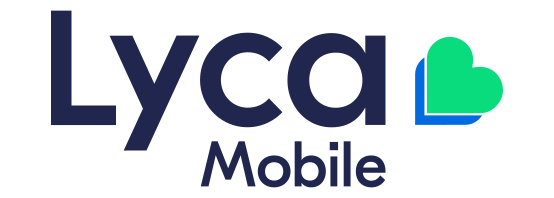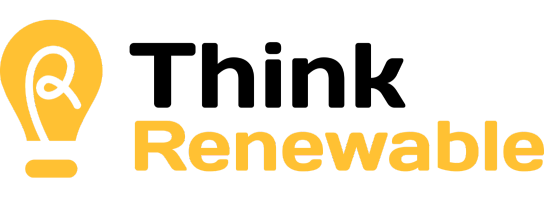The Impact of AI on Marketing, Communications & Digital Jobs
Artificial Intelligence (AI) is not just a buzzword but a powerful force reshaping industries across the board. From healthcare to finance, and particularly in marketing and communications, AI has emerged as a transformative technology with important implications for professionals in these fields. To help you understand the impact of AI on marketing jobs, let’s dive deeper into the benefits, challenges, and the evolving roles that AI has introduced.
How AI is Reshaping Marketing and Communications
AI's integration into marketing and communications strategies has been revolutionary. It empowers organisations to analyse large amounts of data quickly and accurately for more informed decision-making. For example, AI-driven analytics can recognise consumer behaviour patterns from social media interactions, website visits, and purchase histories, providing valuable insights for targeted marketing campaigns.
AI can also enhance personalisation capabilities. Through machine learning algorithms, businesses can tailor content and recommendations based on individual preferences and behaviours. This level of customisation not only boosts engagement but also enhances customer satisfaction and loyalty.
In communications, AI-powered tools can automate routine tasks such as email marketing, customer support inquiries, and content creation. Chatbots, for example, can provide instant responses to customer queries, freeing up human agents for more complex support. This not only improves response times but also ensures round-the-clock availability for a better customer experience.
Benefits of AI in Marketing
There are many advantages to using AI in marketing. Firstly, AI optimises marketing spend by identifying the most effective channels and messages for specific audiences, maximising return on investment. Secondly, AI allows for predictive analytics, forecasting future trends and consumer behaviours with greater accuracy. This allows marketers to adjust strategies and stay ahead of their competitors.
AI also enhances creativity in marketing campaigns—by analysing past campaign performance and audience reactions, AI suggests innovative ideas and content strategies that resonate with target demographics. This data-driven approach minimises guesswork and increases the likelihood of campaign success.
Challenges Posed by AI
As you can imagine, however, the integration of AI in marketing and communications is not without its challenges. One primary concern is data privacy and security. As AI relies heavily on data collection and analysis, ensuring compliance with regulations is crucial to maintaining consumer trust and avoiding legal issues.
Another challenge is the potential displacement of jobs. While AI streamlines processes and enhances productivity, it may also automate tasks traditionally performed by humans. This shift requires training and updating skills to ensure that professionals have the digital abilities they need to succeed in an AI-focused workplace.
There’s also a risk of relying too much on AI-generated insights. While AI can process large amounts of data, human intuition and creativity remain invaluable in interpreting results and making strategic decisions. Finding the right balance between AI-driven automation and human expertise is essential for sustainable growth and innovation.
Impact on Marketing Jobs
The impact of AI on marketing jobs includes automation and augmentation. Routine tasks such as data entry, scheduling, and reporting are increasingly automated, allowing marketers to focus on strategic initiatives and more creative projects. This shift towards automation boosts productivity and efficiency within marketing teams, enabling faster decision-making and campaign execution.
AI augments human capabilities by providing real-time insights and predictive analytics that inform strategic decision-making. Marketing professionals equipped with AI tools can anticipate market trends, personalise customer interactions, and optimise campaign performance with greater precision.
AI Marketing Roles of the Future
As AI continues to evolve, so too will the roles within marketing and communications. New job titles such as AI Marketing Strategist, Data Analyst, and Chief Marketing Technologist are emerging as organisations look for professionals who are able to harness AI for a competitive advantage.
AI Marketing Strategists leverage machine learning algorithms to develop data-driven marketing strategies that resonate with target audiences. Data Analysts interpret AI-generated insights to optimise campaign performance and customer engagement, while Chief Marketing Technologists oversee the integration of AI tools and technologies into existing marketing strategies.
Creativity remains at the heart of marketing roles, with Content Creators and Brand Managers collaborating with AI to craft compelling narratives and memorable brand experiences that connect with consumers on a deeper level.
Upskilling for Business Success
Upskilling involves equipping your team with the digital competencies necessary to harness AI effectively. For business owners and executives, this means ensuring that your marketing professionals are proficient in areas like data analytics, machine learning, and AI-driven tools. These skills empower your team to extract valuable insights from data, optimise campaigns, and enhance customer engagement.
By investing in upskilling, businesses can future-proof their workforce against automation. Employees equipped with AI knowledge can take on strategic roles that require human creativity and decision-making, driving innovation and staying ahead of competitors.
Reskilling for New Opportunities
Reskilling is about preparing your team for emerging roles in AI-driven marketing. For example, positions such as AI Marketing Strategist or Data Scientist require specialised skills in interpreting AI insights and implementing data-driven strategies. By facilitating reskilling programs through workshops, certifications, or partnerships with educational institutions, businesses can pivot their workforce toward roles that align with AI advancements.
This proactive approach not only enhances employee satisfaction and retention but also positions your business as a leader in leveraging AI for marketing excellence.
The Role of Continuous Learning
In the AI era, continuous learning is indispensable for business success. Encourage your team to stay updated on AI trends, technologies, and ethical considerations through ongoing education and professional development initiatives. Provide access to resources such as online courses, industry conferences, and networking opportunities within AI communities.
By fostering a culture of continuous learning, businesses foster a dynamic workforce capable of adapting to technological advancements and driving innovation in marketing and communications.
Recruitment in the Age of AI
As a recruitment agency navigating the digital landscape, WOW recognises the evolving nature of marketing and communications roles in an AI-centric world. Our commitment is to connect forward-thinking organisations with top talent equipped to harness the power of AI for business growth and innovation.
At WOW, we’re committed to supporting employers in navigating this digital transformation. Contact us today to discover how we can help you leverage AI to achieve your business goals. Together, let's embrace the future of AI in marketing and communications with optimism.
















